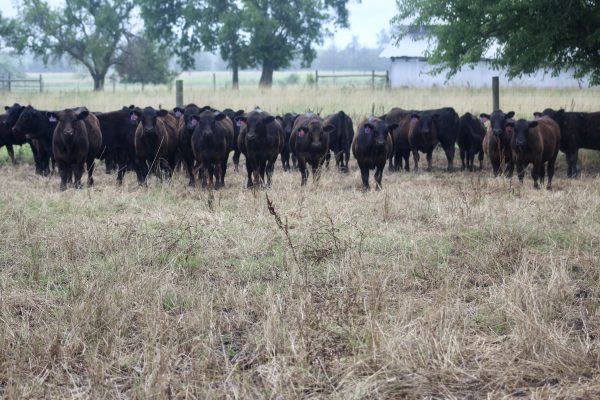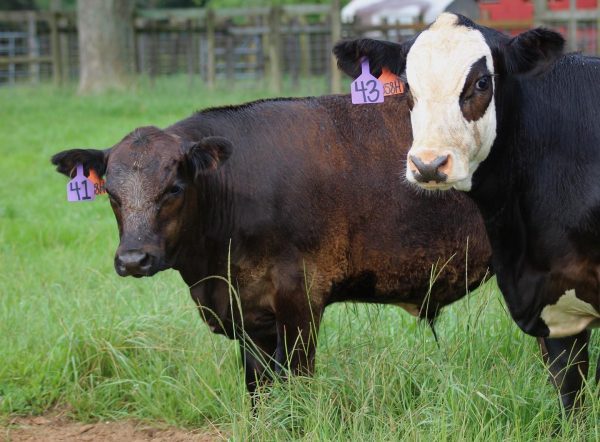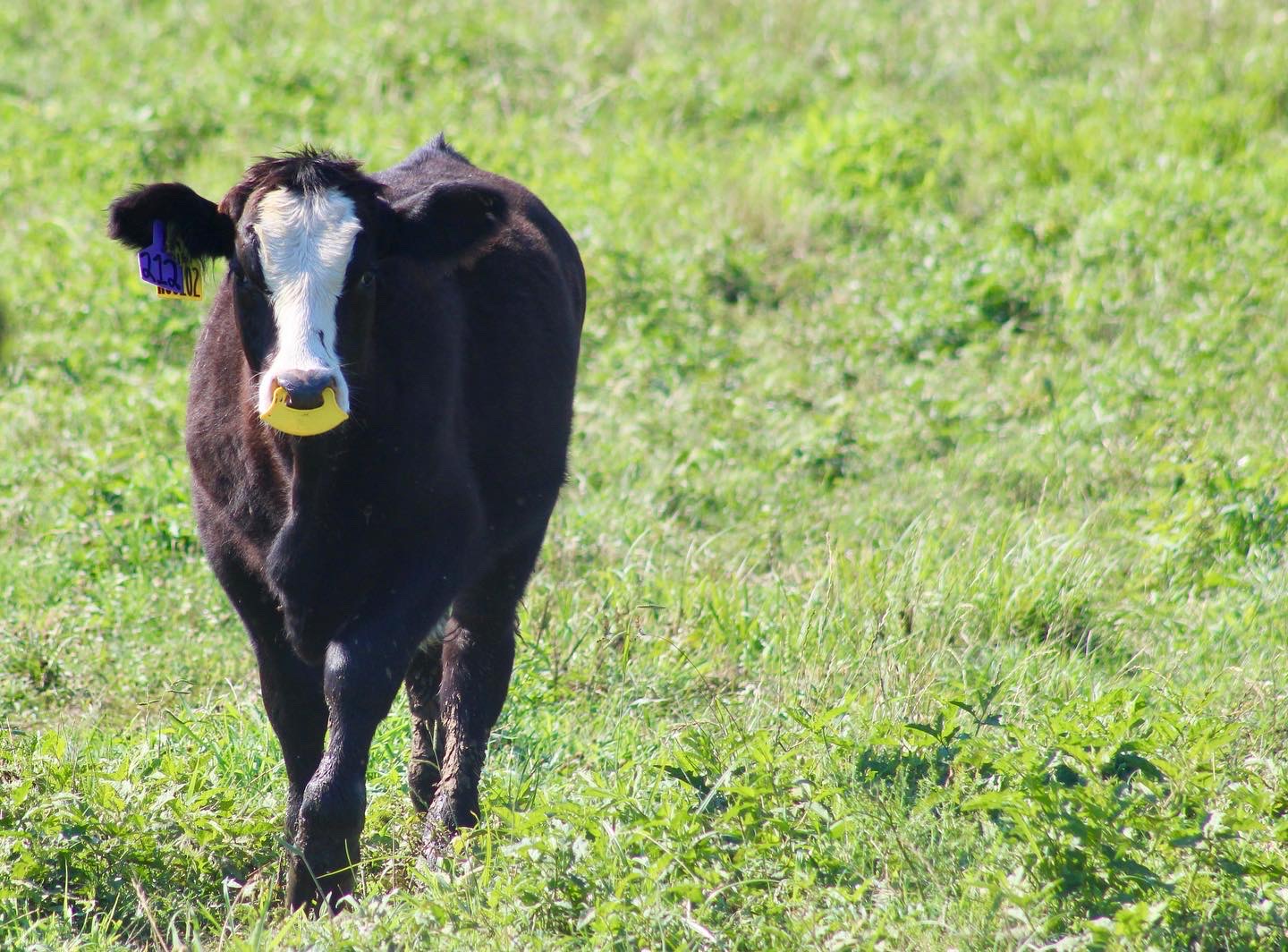Beef

Weaning can have a lasting impact on a calf. How a producer manages calves before, during, and after weaning can have a dramatic effect on overall calf performance and economic viability.
One of the most stressful stages in the life of a beef calf is weaning. During the weaning process, calves are separated from their dam and often experience additional stressful and unfamiliar events including vaccinations, castration, dehorning, and dietary and environmental changes. These stressors negatively affect the calf’s immune system and can increase the risk of infectious disease as well as reduce feed and water intake and overall performance post-weaning. This transition in the life of a calf is critical for both short- and long-term performance and health. Management strategies during weaning can greatly impact economic viability and overall calf performance and quality. Taking steps to ensure that calves are prepared for this change in life is imperative.
Preparing for Weaning
Cow-calf producers have several management options to choose from when determining what weaning strategy works best for their production systems. Collecting calf weaning weights is critical for beef cattle performance recordkeeping. The calf age range for the collection of a weaning weight should be from 160 to 250 days of age for the accurate calculation of a 205-day adjusted weaning weight. (Refer to Extension publication ANR- 2577, Beef Cattle Performance Record Keeping.) Adjusted weaning weights are a key measurement of calf growth and dam milking ability and need to be adjusted for a standard calf age point for equal comparison. The timing of weaning weight collection should, therefore, be considered in selecting a weaning strategy. Additional considerations in preparation for weaning include consulting your veterinarian regarding a vaccination protocol, nutritional management, and marketing strategies for calves post-weaning. For more information on these topics, see Extension publications ANR-0968, Vaccinations for the Beef Cattle Herd, and ANR-2755, Preconditioning Systems and Management Practices for Beef Calves.
Weaning Methods
When it comes time for weaning, several weaning strategies can be used, and producers should choose the separation method that works best for
their operation. Three of the more common weaning strategies are abrupt separation, fenceline weaning, and two-stage weaning, all of which can be modified to meet producers’ needs.
Abrupt Separation
 Abrupt separation weaning is often thought of as the traditional method of weaning and consists of an abrupt, total separation of the cow and calf so that they cannot come in close contact and sometimes cannot even see or hear each other. With this method, calf weaning weights need to be collected on the day of separation. Calves are typically moved to a new environment such as a pasture or drylot, often resulting in fence walking and vocalization as cows and calves search for one another. This behavior can last several days and may cause a high amount of stress on calves and cows.
Abrupt separation weaning is often thought of as the traditional method of weaning and consists of an abrupt, total separation of the cow and calf so that they cannot come in close contact and sometimes cannot even see or hear each other. With this method, calf weaning weights need to be collected on the day of separation. Calves are typically moved to a new environment such as a pasture or drylot, often resulting in fence walking and vocalization as cows and calves search for one another. This behavior can last several days and may cause a high amount of stress on calves and cows.
The abrupt separation method gives a producer the option to sell the calf almost immediately through direct marketing or sending calves directly to the sale barn and eliminates the need to purchase feed and plan for reserve forages for calves. However, selling calves right at weaning can cause other issues such as high shrink loss at the time of sale, possibly 7 to 9 percent of body weight, as well as additional stress from exposure to new environments and new diets while trying to recover from separation.
Fenceline Weaning
Fenceline weaning consists of separating cows and calves from one another through the opposite sides of a fenceline and allowing them to have nose-to-nose contact for a period of time. This method allows calves to remain in a familiar environment while adapting to the separation. Fenceline weaning has shown decreased stress with less fence walking and fewer vocalizations.
Not all farms have a location adequate for fenceline weaning. In order to implement this method, the producer must ensure that fencing is in good condition and reinforced so that calves and cows cannot get through to the other side. Having a fence that is long enough for the cows and calves to spread out and maintain some physical proximity is also important. With this method, producers should also have a feeding and grazing plan to support both calves and cows. Keeping the calves on a similar diet before and after the weaning event can reduce stress and keep feed intake from decreasing. Calf weaning weight collection should occur the first day the calves are moved to a separate pasture with fenceline ncontact with cows.
Two-Stage Weaning
 Stage one of this method of weaning involves placing a device such as a noseflap on the calf and allowing the calf to remain with its dam. The noseflap allows the calf to continue to graze and drink water but prevents it from nursing. For this method, the collection of calf weaning weights should be done at the time the device is applied. Stage two occurs in approximately 10 to 14 days, at which time the noseflap is removed and the calf and dam are separated. The two-stage method is also generally considered less stressful than the more traditional abrupt separation as it breaks weaning into two separate and less stressful events: removing the ability to nurse and then separation from the dam. This method is more labor intensive, however, as calves must be handled to apply the noseflap and again when it needs to be removed. There are also additional costs associated with buying the flaps at approximately 2 dollars per calf.
Stage one of this method of weaning involves placing a device such as a noseflap on the calf and allowing the calf to remain with its dam. The noseflap allows the calf to continue to graze and drink water but prevents it from nursing. For this method, the collection of calf weaning weights should be done at the time the device is applied. Stage two occurs in approximately 10 to 14 days, at which time the noseflap is removed and the calf and dam are separated. The two-stage method is also generally considered less stressful than the more traditional abrupt separation as it breaks weaning into two separate and less stressful events: removing the ability to nurse and then separation from the dam. This method is more labor intensive, however, as calves must be handled to apply the noseflap and again when it needs to be removed. There are also additional costs associated with buying the flaps at approximately 2 dollars per calf.
Summary
As one of the most stressful periods in the life of a beef calf, weaning can have a lasting impact. How producers manage their calves before, during, and after weaning can have a dramatic effect on overall calf performance and economic viability. Any weaning process to help make the separation more gradual and less stressful can potentially improve herd health and performance. Cow-calf producers should understand and examine all options available to determine the best overall weaning strategy for their operation.
 Maggie Justice, Graduate Research Assistant, Kim Mullenix, Extension Beef Specialist, Associate Professor, Michelle Elmore, Extension Associate Professor, Soren Rodning, Extension Veterinarian, Associate Professor, all in Animal Sciences, Auburn University; Manuel Chamorro, Assistant Professor, Clinical Sciences, College of Veterinary Medicine, Auburn University
Maggie Justice, Graduate Research Assistant, Kim Mullenix, Extension Beef Specialist, Associate Professor, Michelle Elmore, Extension Associate Professor, Soren Rodning, Extension Veterinarian, Associate Professor, all in Animal Sciences, Auburn University; Manuel Chamorro, Assistant Professor, Clinical Sciences, College of Veterinary Medicine, Auburn University
New August 2021, Weaning Methods for Beef Cow-Calf Operations, ANR-2823

